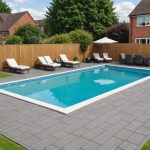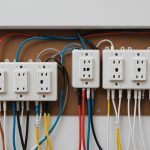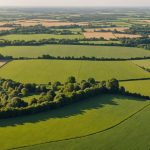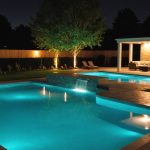Transforming your limited urban yard into a vibrant green space is possible, even in the heart of the UK. Eco-friendly artificial grass not only revitalizes your outdoor area but also promotes sustainability. This guide offers a practical, step-by-step approach to installing artificial grass, making it accessible for anyone eager to enhance their home environment. Embrace nature without the maintenance hassle and discover how to create a lush, inviting area that enhances your lifestyle. Let’s get started!
Understanding Eco-Friendly Artificial Grass
Eco-friendly artificial grass offers a sustainable alternative to natural lawns, providing numerous benefits while minimizing environmental impact. Unlike traditional grass, which requires regular watering, mowing, and fertilizing, artificial grass is low-maintenance and conserves water. This makes it an ideal solution for areas facing water scarcity.
Lire également : Smart Financing Solutions for Green Retrofits: Transforming Your UK Post-War Suburban Home
Benefits of Artificial Grass
The benefits of artificial grass extend beyond water conservation. It eliminates the need for harmful pesticides and fertilizers, contributing to a healthier ecosystem. Additionally, it remains green and lush throughout the year, regardless of weather conditions, ensuring a consistently attractive landscape.
Environmental Impact
When considering the environmental impact, eco-friendly artificial grass stands out. It reduces carbon emissions by eliminating the need for gas-powered lawn equipment. Furthermore, many modern artificial grass options are made from recycled materials, enhancing their sustainability credentials.
Avez-vous vu cela : Creating a Stylish and Practical Mudroom for Your UK Country House: Design Tips and Ideas
Common Misconceptions
Despite these advantages, there are common misconceptions about artificial grass. Some believe it contributes to heat buildup, but advancements in technology have led to the development of heat-resistant materials. Others worry about its impact on local wildlife; however, artificial grass can coexist with natural habitats when installed thoughtfully.
In conclusion, eco-friendly artificial grass offers a practical and sustainable solution for those looking to maintain a beautiful lawn with minimal environmental impact.
Choosing the Right Type of Artificial Grass
When selecting artificial grass, several factors should be considered to ensure you choose the most suitable option for your needs. The types of artificial grass vary in terms of material, pile height, and density, which can significantly influence their performance and appearance.
Factors to Consider
- Material: Artificial grass is typically made from polyethylene, polypropylene, or nylon. Each material offers different benefits; for instance, polyethylene is soft and durable, making it ideal for residential lawns, while nylon is highly resilient and suitable for high-traffic areas.
- Pile Height: The height of the grass blades affects the look and feel of the lawn. Shorter piles are easier to maintain and often used in sports fields, whereas longer piles provide a more lush appearance for residential landscapes.
- Density: Denser grass is more durable and offers a more natural look but can be more expensive.
Comparing Different Types for Urban Environments
In urban settings, where space and environmental conditions vary, selecting artificial grass that withstands heavy use and diverse weather is crucial. Assessing the quality and durability of the grass ensures it remains attractive and functional over time, providing a long-lasting solution for urban landscapes.
Preparing Your Urban Yard for Installation
Before installing artificial grass, yard preparation is crucial to ensure a successful outcome. Begin by accurately measuring and planning your space. This step involves determining the dimensions of the area where the artificial grass will be installed. Precise measurements help avoid unnecessary waste and ensure a perfect fit, making the installation process smoother.
Once the measurements are complete, the next step is to clear the area of existing vegetation and debris. Removing all plants, roots, and rocks is essential to create a clean and even surface. This preparation step is vital to prevent any future issues with the artificial grass, such as uneven surfaces or unwanted growth.
Ensuring proper drainage is another critical aspect of yard preparation. Good drainage prevents water accumulation, which can lead to unpleasant odours and damage to the artificial grass. Consider the natural slope of your yard and, if necessary, install a drainage system to facilitate water flow. This will help maintain the longevity and appearance of your artificial grass.
By carefully planning and executing these steps, you can create a well-prepared yard that will provide a stable foundation for your artificial grass, ensuring a beautiful and durable landscape in your urban environment.
Tools and Materials Needed for Installation
When installing artificial grass, having the right tools and materials is essential for a successful project. The selection of installation tools can significantly impact the ease and quality of the installation process.
Essential Tools Required for Installation
To begin, you'll need a few basic tools: a measuring tape for accuracy, a shovel for clearing debris, and a rake to level the ground. A compactor is crucial for creating a firm base, while a utility knife is necessary for cutting the grass to fit your space precisely. Additionally, a seam roller helps secure the seams of the grass, ensuring a smooth finish.
Recommended Eco-Friendly Materials
For an eco-friendly approach, choose materials like recycled rubber or cork for the underlay. These materials provide cushioning and drainage while minimizing environmental impact. Opt for lead-free artificial grass to reduce harmful emissions.
Where to Source Your Materials in the UK
In the UK, many suppliers offer sustainable materials for artificial grass. Companies specialising in eco-friendly landscaping materials can provide everything you need, from the grass itself to the underlay and adhesives. Research local suppliers to find the best options for your project, ensuring both quality and sustainability.
Step-by-Step Installation Process
Embarking on an artificial grass installation journey requires attention to detail to ensure a flawless finish. This installation guide will walk you through the necessary steps for a successful project.
Laying the Artificial Grass
Begin by unrolling the artificial grass onto the prepared surface. Allow it to rest for a few hours to let any creases settle. Trim the edges to fit the designated area precisely, using a utility knife for clean cuts. Ensure the grass blades face the same direction for a uniform appearance.
Securing and Joining Pieces
To secure the grass, use landscape staples or adhesive along the perimeter. For larger areas requiring multiple rolls, join the pieces using seaming tape and glue. Align the edges carefully to avoid visible seams. Press firmly with a seam roller to ensure a strong bond.
Achieving a Natural Look
To achieve a natural look, brush the grass blades with a stiff broom to lift them and blend any visible seams. Adding infill, such as silica sand, can help weigh down the grass and enhance its appearance. This step also improves drainage and provides a cushioned feel underfoot. By following these steps, your artificial lawn will look vibrant and inviting.
Eco-Friendly Considerations During Installation
When installing artificial grass, embracing sustainable installation practices is crucial for minimizing environmental impact. Start by choosing eco-friendly materials, such as recycled rubber or cork underlay, which provide effective drainage and cushioning while reducing waste. Opt for lead-free artificial grass to further enhance sustainability.
During the installation process, focus on minimizing waste by accurately measuring the area and cutting the grass precisely to fit. This approach not only reduces leftover materials but also ensures a seamless finish. Any excess grass can be recycled or repurposed for smaller projects, such as creating pathways or garden borders.
Incorporating natural landscaping elements into your design can enhance the eco-friendliness of your artificial lawn. Consider adding native plants around the perimeter to support local biodiversity and create a harmonious blend with the synthetic turf. These plants can thrive without excessive watering or chemical treatments, aligning with the overall sustainable theme.
Finally, ensure that any adhesives or joining materials used are non-toxic and environmentally friendly. By integrating these eco-friendly practices into your installation, you contribute to a greener and more sustainable landscape, benefiting both your home and the environment.
Maintenance Tips for Artificial Grass
Caring for artificial grass involves regular maintenance to ensure it remains vibrant and durable. Unlike natural grass, artificial lawns require less effort but still benefit from a structured upkeep routine.
Regular Maintenance Tasks
To keep your lawn in top condition, artificial grass maintenance should include regular brushing to prevent matting. Use a stiff broom to lift the blades and remove debris. This not only enhances the appearance but also prolongs the life of the grass.
Best Practices for Cleaning
Cleaning is essential for maintaining a fresh look. Rinse the grass with water periodically to remove dust and pollen. For areas with pet activity, use a mild detergent solution to neutralize odours. Regularly check for and remove any weeds that may sprout around the edges.
Seasonal Considerations in the UK
In the UK, seasonal changes can affect your artificial lawn. During autumn, remove fallen leaves promptly to prevent mould growth. Winter may require brushing off snow to avoid weight damage. In spring and summer, check for any repairs needed due to frost or heavy use. Adhering to these practices ensures your artificial grass remains a beautiful and practical feature of your landscape.
Cost Considerations for Installation
When considering the cost of artificial grass, it's essential to understand the expenses involved in both purchasing and installing the product. On average, the cost of artificial grass ranges from £10 to £30 per square metre, depending on the quality and features of the grass chosen. Installation costs can add an additional £20 to £40 per square metre, influenced by factors such as site preparation, complexity of the layout, and local labour rates.
Several factors can influence the overall cost of artificial grass installation. The size of the area, the type of grass selected, and any additional features like edging or drainage systems can significantly impact the final price. Urban homeowners should also consider potential costs for removing existing landscaping and preparing the ground for installation.
To effectively budget for installation, urban homeowners can follow these tips:
- Obtain multiple quotes from reputable installers to compare prices.
- Consider the long-term savings on water and maintenance when evaluating initial costs.
- Opt for mid-range grass options that offer durability without the premium price tag.
By carefully considering these factors, you can effectively budget for your artificial grass project, ensuring a balance between cost and quality.
Enhancing Your Urban Yard Post-Installation
Transforming your urban yard after installing artificial grass can elevate your outdoor space's aesthetic and functionality. By incorporating thoughtful landscaping ideas, you can create a harmonious and inviting environment.
Creative Landscaping Ideas
Consider adding a variety of plants to complement your artificial grass. Choose native species that thrive with minimal water and maintenance, enhancing the eco-friendliness of your yard. Incorporating raised flower beds or vertical gardens can add dimension and colour to your space, providing a vibrant contrast to the lush green grass.
Incorporating Plants and Features
Integrate features like birdbaths or small water fountains to promote biodiversity and create a tranquil atmosphere. These elements can attract local wildlife, fostering a mini-ecosystem in your urban landscape. Additionally, using natural stone pathways or wooden decking can create functional areas for walking or seating without disrupting the natural feel.
Outdoor Furniture and Decoration Tips
In small urban spaces, opt for multifunctional furniture that maximizes utility without overcrowding. Foldable chairs or benches with storage can be practical choices. Add personal touches with decorative elements like solar-powered lights or weatherproof cushions to enhance comfort and style. These thoughtful additions ensure your urban yard remains a beautiful and sustainable retreat.
Resources and Further Reading
For those interested in exploring more about artificial grass resources and eco-friendly landscaping, several avenues offer additional information. Engaging with these resources can enhance your understanding and decision-making process.
Recommended Websites and Guides
Numerous websites provide in-depth guides on artificial grass. These platforms often feature detailed articles, user reviews, and expert advice on installation, maintenance, and sustainability. They serve as valuable tools for both beginners and experienced gardeners looking to make informed choices.
Local Suppliers and Installers in the UK
Connecting with local suppliers and installers is crucial for sourcing quality materials and services. Many UK-based companies specialise in eco-friendly options, ensuring your project aligns with environmental standards. Engaging with these professionals can provide insights into the latest products and installation techniques.
Community Resources for Eco-Friendly Gardening
Participating in community initiatives focused on eco-friendly gardening can be both educational and rewarding. Local gardening clubs or workshops often discuss sustainable practices, offering a platform to share experiences and gather additional information. These community resources can be instrumental in promoting green practices and fostering a supportive network for enthusiasts.











